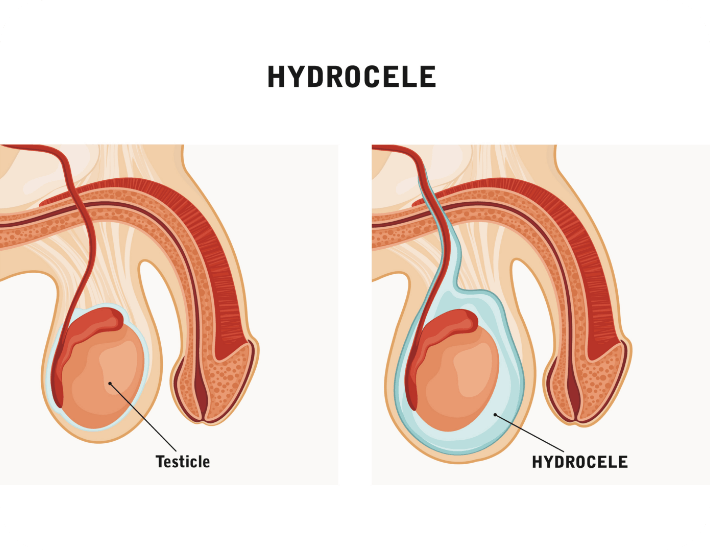Hydrocele
What is a Hydrocele?
A hydrocele is a common condition characterized by the accumulation of fluid in the sac surrounding the testicle, known as the tunica vaginalis. This fluid build-up causes the scrotum to swell, resulting in a painless, fluid-filled lump.
Common Characteristics
- Scrotal Swelling: The most noticeable sign of a hydrocele is swelling in the scrotum, which may vary in size.
- Painless: Hydroceles are typically painless, though larger ones may cause a sense of heaviness or discomfort.
- Transillumination: When shining a light through the swollen area, the fluid-filled nature of the hydrocele becomes apparent.
Causes of Hydrocele
Hydroceles can develop for various reasons, including:
- Congenital: Present at birth and may resolve on its own during infancy.
- Injury or Infection: Inflammation or trauma can lead to the accumulation of fluid.
- Idiopathic: No clear cause; it may develop without an apparent reason.
Symptoms
- Visible Swelling: The primary symptom is the visible enlargement of the scrotum.
- Discomfort: Larger hydroceles may cause a feeling of heaviness or discomfort.
Diagnosis
- Physical Examination: A urologist can typically diagnose a hydrocele through a physical examination of the scrotum.
- Transillumination: Shining a light through the scrotum to confirm the presence of fluid.
Treatment Options
In many cases, hydroceles resolve on their own, especially in infants.
However, if a hydrocele persists or causes discomfort, treatment options may include:
- Aspiration: Draining the fluid using a fine needle.
- Surgery (Hydrocelectomy): Surgical removal of the hydrocele for more persistent cases.

Monitoring and Follow-up
Regular follow-ups with a urologist are advised to monitor the size and characteristics of the hydrocele. If there are any changes or concerns, further evaluation can be conducted promptly.